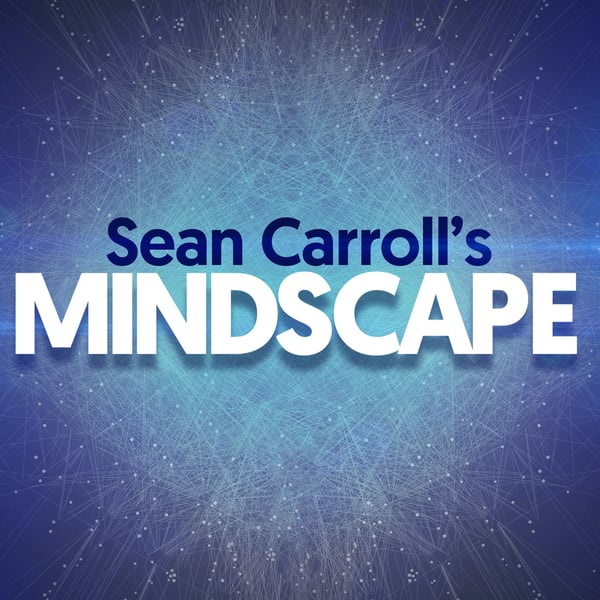201 | Ed Yong on How Animals Sense the World
Sean Carroll's Mindscape: Science, Society, Philosophy, Culture, Arts, and Ideas
Sean Carroll | Wondery
4.8 • 4.4K Ratings
🗓️ 20 June 2022
⏱️ 69 minutes
🧾️ Download transcript
Summary
All of us construct models of the world, and update them on the basis of evidence brought to us by our senses. Scientists try to be more rigorous about it, but we all do it. It’s natural that this process will depend on what form that sensory input takes. We know that animals, for example, are typically better or worse than humans at sight, hearing, and so on. And as Ed Yong points out in his new book, it goes far beyond that, as many animals use completely different sensory modalities, from echolocation to direct sensing of electric fields. We talk about what those different capabilities might mean for the animal’s-eye (and -ear, etc.) view of the world.
Support Mindscape on Patreon.
Ed Yong received Masters and Bachelors degrees in zoology from Cambridge University, and an M.Phil. in biochemistry from University College London. He is currently a staff writer for The Atlantic. His work has appeared in National Geographic, the New Yorker, Wired, the New York Times, and elsewhere. He was awarded the Pulitzer Prize in explanatory journalism for his coverage of the COVID-19 pandemic. Among his other awards are the George Polk award for science reporting and the AAAS Kavli Science Journalism Award for in-depth reporting. His new book is An Immense World: How Animal Senses Reveal the Hidden Realms Around Us.
See Privacy Policy at https://art19.com/privacy and California Privacy Notice at https://art19.com/privacy#do-not-sell-my-info.
Transcript
Click on a timestamp to play from that location
| 0:00.0 | Hello everyone and welcome to the Mindscape Podcast. I'm your host, Shawn Carroll. |
| 0:03.7 | If you spend any time on the internet, or maybe even if you don't, you probably have heard |
| 0:08.2 | about the amazing visual abilities of the Mantis shrimp. The Mantis shrimp is a tiny little guy, |
| 0:15.4 | it's a shrimp that has probably the most complex eyes in the entire animal kingdom. |
| 0:22.7 | You know, we human beings, we have color vision, our color sensitivity is pretty good. |
| 0:26.6 | Human beings have pretty good eyes and we have three different kinds of cones in our eyes, |
| 0:32.2 | three different kinds of color sensitive photo receptors that are the three different kinds |
| 0:37.1 | sensitive to slightly different wavelengths. If you're an astronomer, like I used to be, |
| 0:41.9 | it's like three different filters that pass different wavelengths through to the eyes. |
| 0:46.9 | So we can combine these three different kinds of photo receptors, |
| 0:50.8 | tri-chromatism it is called to reproduce what we see as different colors of light, what we perceive |
| 0:57.6 | as different colors of light. Now the Mantis shrimp has 12 different kinds of photo receptors |
| 1:03.6 | with different sensitivities across the spectrum. So it has been in popular imagination imagined |
| 1:10.0 | that the Mantis shrimp sees a whole bunch of kinds of colors that we human beings can't actually see. |
| 1:16.0 | Sadly, that's not true and on today's podcast you will learn that that is not true. |
| 1:20.9 | The Mantis shrimp doesn't actually take advantage of its dodeca chromatism or whatever you want to |
| 1:27.8 | call it. It's actually according to physiological tests not able to discern even as many colors as |
| 1:34.4 | human beings are sorry to undo that little legend for you. But the point remains the same, |
| 1:40.5 | which is that we use our senses to make pictures of the world, to build a model of what is really |
| 1:47.7 | out there. And of course there's a trivial sense in which different kinds of animals sense the |
| 1:53.2 | world differently if they're sensitive to different wavelengths of light or different frequencies |
| 1:58.1 | of sound. But there's also a more profound sense in which animals of different species perceive |
... |
Please login to see the full transcript.
Disclaimer: The podcast and artwork embedded on this page are from Sean Carroll | Wondery, and are the property of its owner and not affiliated with or endorsed by Tapesearch.
Generated transcripts are the property of Sean Carroll | Wondery and are distributed freely under the Fair Use doctrine. Transcripts generated by Tapesearch are not guaranteed to be accurate.
Copyright © Tapesearch 2025.

